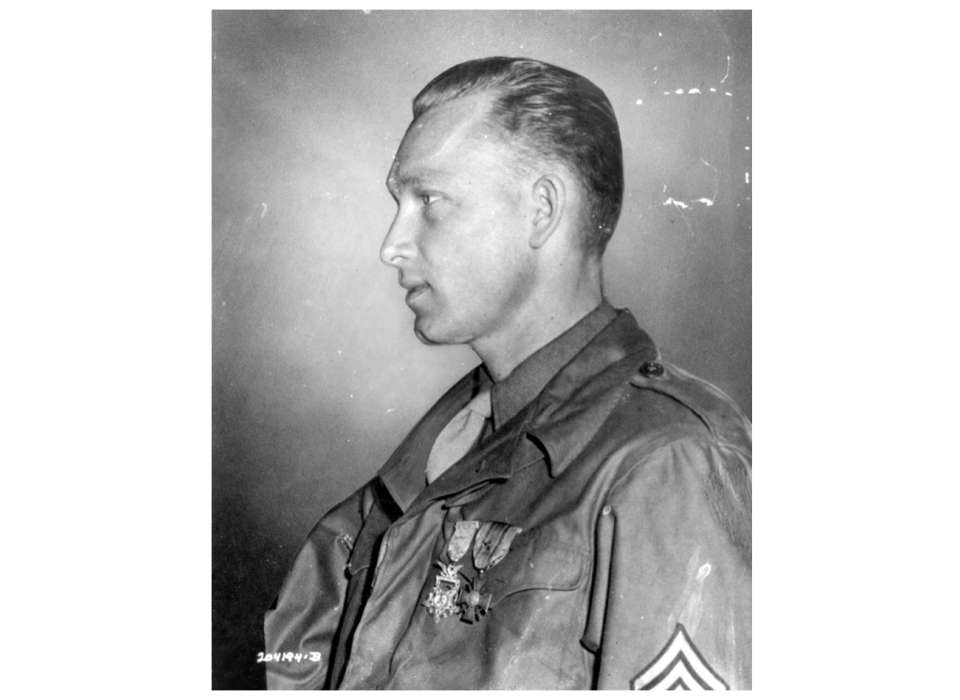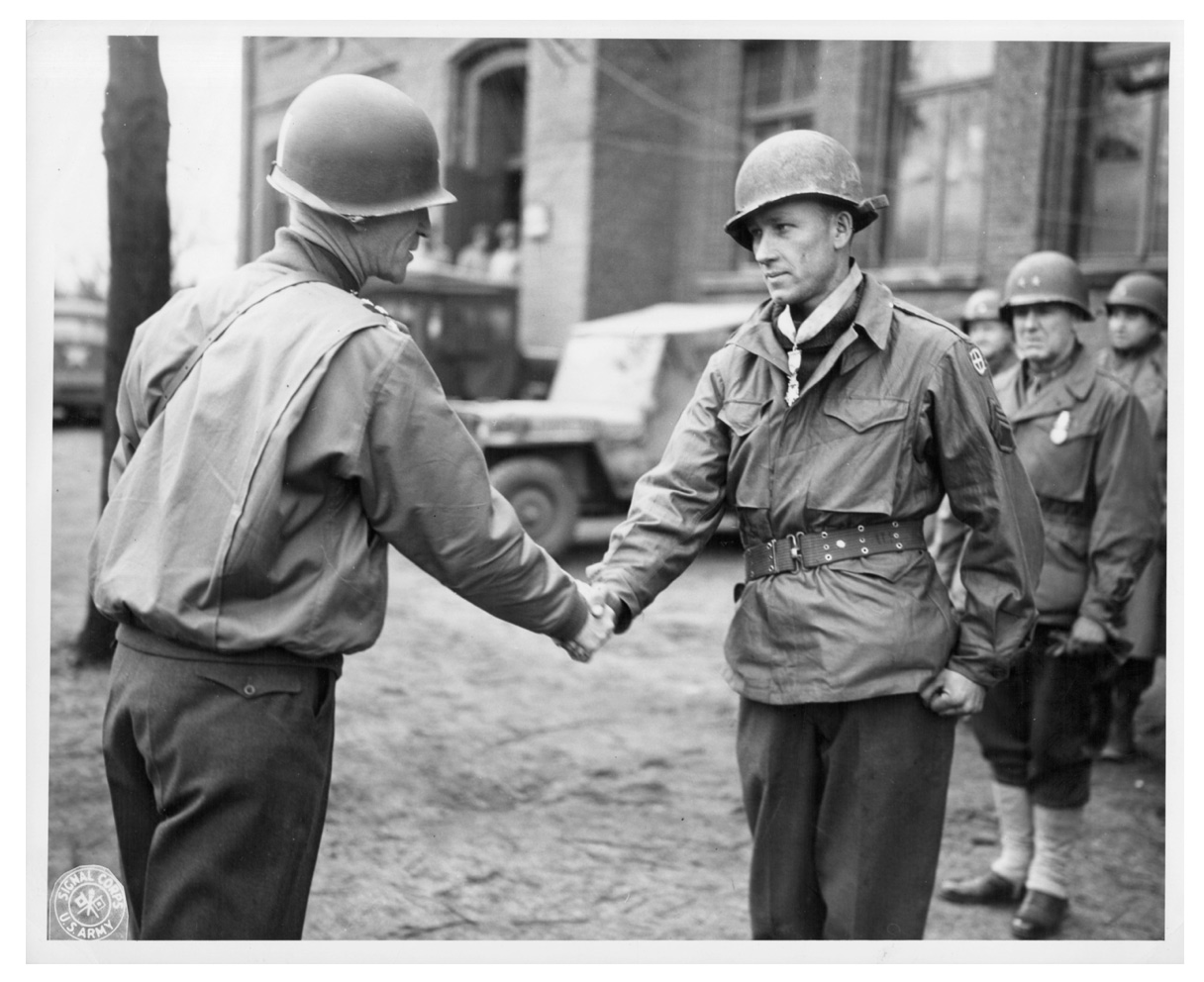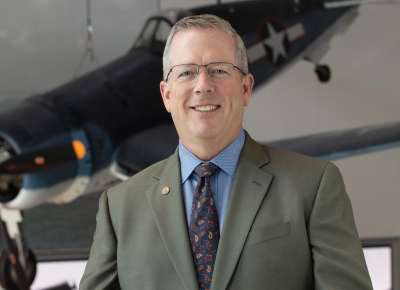Top image: Junior James Spurrier, Courtesy Congressional Medal of Honor Society, https://www.cmohs.org/recipients/junior-j-spurrier#media-gallery
James I. Spurrier Jr. was born on December 14, 1922. He lived with his parents and five siblings in Virginia’s Appalachian Mountains, where many families suffered from poverty. After quitting school in the 7th grade to help support his family, Spurrier tried his hand at farming before finding a job at a Civilian Conservation Corps camp in Bluefield, West Virginia. After his mother died in 1940, Spurrier decided to enlist in the US Army. He was known as “Junior J. Spurrier” throughout his time in the service, because he printed his name in the wrong spaces on his enlistment paperwork.
After a difficult adjustment to the discipline of Army life, Spurrier deployed to the South Pacific as an infantry soldier. Wounded in New Guinea in the fall of 1943, he returned to the United States to recover. After a short leave at home, Spurrier volunteered to return to combat duty. He joined the 35th Infantry Division, landing in Normandy on D+1 with Company G, 134th Infantry Regiment. Spurrier, now a staff sergeant, proved to be an excellent combat soldier, although his lack of discipline led to his assignment as a company runner rather than a squad leader. This enabled him to fight on his own, which was his preference.
Spurrier aptly showed his individual prowess in combat near Lay-Saint-Christophe, France, on September 16, 1944. While attacking a heavily defended position on a hill, Spurrier mounted an American tank destroyer and engaged the enemy with its .50 caliber machine gun, killing at least a dozen Germans. Twice he dismounted to attack enemy bunkers with grenades and rifle fire before returning to the tank destroyer. By the time he reached the top of the hill, Spurrier captured more than 20 German prisoners, opening the way for his company to advance. He received the Distinguished Service Cross for his heroism in this engagement.
Less than two months later, Spurrier once again showed his exceptional individual fighting prowess. On November 13, 1944, as his company attacked the German-held town of Achain, France, from the east, Spurrier moved by himself to the opposite side of the town. At 2 p.m. he attacked from the west, armed with a Browning Automatic Rifle (BAR). He quickly killed three Germans and continued his advance into the town. Over the next few hours, Spurrier faced concentrated fire from small arms and automatic weapons as he fought his way through the streets. He used whatever weapons he could find to keep the attack going. In addition to his BAR and M1 rifle, Spurrier used American and German rocket launchers, hand grenades, and a German automatic pistol. By nightfall he had killed one enemy officer and 24 enlisted soldiers and captured two officers and two enlisted soldiers, all while fighting alone.
After these heroics, Spurrier’s fellow GIs began calling him the “One Man Army.” He remained with the 35th Division, receiving a second Purple Heart during the Battle of the Bulge. Despite some alcohol-related discipline problems, General William H. Simpson, commander of the Ninth US Army, presented Spurrier his Medal of Honor on March 6, 1944. Spurrier’s citation read:
For conspicuous gallantry and intrepidity at the risk of his life above and beyond the call of duty in action against the enemy at Achain, France, on 13 November 1944. At 2:00 P.M., Company G attacked the village of Achain from the east. S/Sgt. Spurrier armed with a BAR passed around the village and advanced alone. Attacking from the west, he immediately killed three Germans. From this time until dark, S/Sgt. Spurrier, using at different times his BAR and M1 rifle, American and German rocket launchers, a German automatic pistol, and hand grenades, continued his solitary attack against the enemy regardless of all types of small-arms and automatic-weapon fire. As a result of his heroic actions he killed an officer and 24 enlisted men and captured two officers and two enlisted men. His valor has shed fresh honor on the U.S. Armed Forces.
Simpson’s aide, Major John D. Horn, recalled after the war that Spurrier’s fellow soldiers joked about their standard procedure for an attack: “The company would envelop from the right, and Spurrier would envelop from the left.”¹
Spurrier returned home soon after the war ended, but he faced a difficult readjustment to civilian life. A soldier’s training does not always translate well, and Spurrier’s difficulties with alcohol abuse made matters worse. He soon reenlisted, but poor discipline resulted in his demotion to the rank of private. When the Korean War began in 1950, Spurrier refused to deploy to combat, leading to his general discharge in 1951. His drinking problem worsened, and he soon found himself in trouble with the law. He served three jail terms, one for attempted murder, before vowing never to touch alcohol again upon his release from prison in 1969. Spurrier spent the rest of his days sober but alone in a cabin in rural eastern Tennessee. He died on February 25, 1984, and is buried at Mountain Home National Cemetery (HH-15-8) in Johnson City, Tennessee.
¹ Major John D. Horn, interview by Colonel (Retired) Thomas R. Stone, Darien, CT, June 21, 1971. Author’s collection.
Mark T. Calhoun, PhD
Mark T. Calhoun, PhD, is a former Senior Historian at the Jenny Craig Institute for the Study of War and Democracy.
Cite this article:
MLA Citation:
APA Citation:
Chicago Style Citation:






![Max Fuchs, New York City cantor, sings as Rabbi Sydney [sic] Lefkowitz, Richmond, VA, conducts the first Jewish services from Germany.](/sites/default/files/styles/max_650x650/public/2025-10/image1.jpg)



